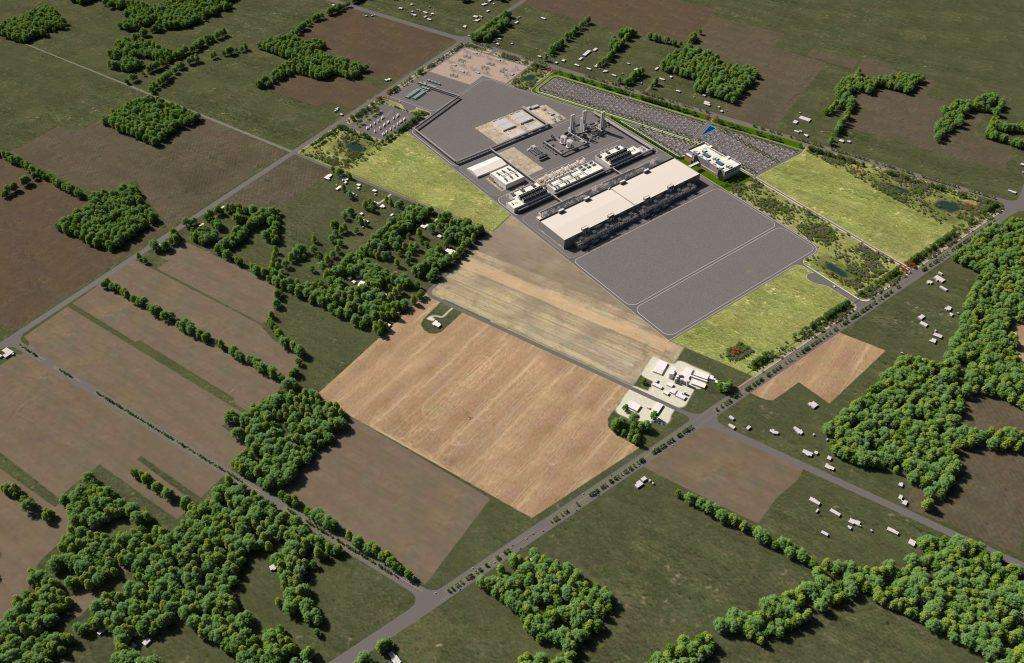Call Toll Free +1 855-856-TIPS
LICKING COUNTY, OHIO – News came today from Intel confirming formally that the company has indeed ruled out Texas’ bid and will lay foundations in Ohio. An initial investment of more than $20 billion has been announced by Intel for the development of two new cutting-edge chip facilities.In order to address the growing demand for advanced semiconductors, Intel plans to use the investment to increase production in order to fulfill that demand while also serving the needs of foundry customers as part of the IDM 2.0 strategy.

Intel has dedicated an additional $100 million to relationships with educational institutions in the region in order to construct a talent pipeline and strengthen research programs as part of the new site’s development.
Where Has Intel Been?
The company has been out of the limelight lately. Loosing all that shine to the noise box from the “metaverse” that has been making so much noise lately and most analysts have been putting the company down stating lack of innovation and leadership.
Intel has some very cool and promising technology they have been working on over the last year. In September the company announced Loihi 2, its second-generation neuromorphic research chip, and Lava, an open-source software framework for developing neuro-inspired applications. Their introduction signals Intel’s ongoing progress in advancing neuromorphic technology.
Research has been into brain-inspired computer vision algorithms for intelligent edge computing, which could power future extended-reality headsets or intelligent mobility robots. Technology needed now for our generation of neuromorphic architecture.
For hyper-dimensional computation and on-chip learning, the new chip has capabilities that will make it faster, while the Lava API gives developers with a simpler and more simplified way to design neuromorphic systems.
There are many edge applications that could benefit from neuromorphic computing, which uses neuroscience to create chips that function more like the biological brain. These include vision and voice recognition, search retrieval, robotics, constrained optimization problems, and more.
Robotic arms, neuromorphic skins, and olfactory sensing have all been demonstrated by Intel and its partners so far.
Use cases to date from Intel and its partners include robotic arms, neuromorphic skins and olfactory sensing.
Integrating seamlessly with real-world robotics systems, traditional processors, and unique sensors Loihi 2 solves a practical restriction of Loihi by introducing faster, more flexible, and more standard input/output interfaces. Loihi 2 chips include Ethernet ports, glueless integration with a broader range of event-based vision sensors, and larger Loihi 2 chip meshed networks.
President Biden Makes It Clear That It Is Game On.
American companies continue construction and development of massive chip manufacturing facilities throughout the country at a very fast pace. Read our background article here on the ongoing chip issues that have been battering US consumers.
Our President focused on the great needs America has for better technology, chip programs, and tech infrastructure. He emphasized how important research and development is. The news is on the heels of legislature passing the Senate over the summer with the Chip Bill. The legislation comes as a shortage of consumer chips, exacerbated in part by the epidemic, has resulted in price increases and shortages of goods ranging from automobiles to dishwashers, contributing to the greatest inflation in decades.
While Intel has stated that the chip shortfall is projected to last until 2023, Biden stated that the new plant would eventually help reduce the United States’ reliance on foreign suppliers, primarily China.
That’s Not All
Major investments in construction of specialized research and development facilities are in the award phase. One of the most notable projects is Hanscom AFB Advanced Compound Semiconductor Laboratory/Microsystem Integration Facility. We had the pleasure of reviewing the project drawings and specifications with Gilbane recently in a exercise with AGGRECOST.
The project is more than 162,000 gross square feet of new laboratory and office space to be constructed for use by the Advanced Technologies Division of the MIT Laboratory. The AFCEC-funded Advanced CSL MIF contains an advanced clean room facility.
This project’s general scope is construction of a new Compound Semiconductor Laboratory and Microelectronics Integration Facility or (CSL-MIF) valued at a $200 Million.
More than 35,000 net square feet of cleanroom space is required to accommodate all of the cleanroom bays as well as chases and the associated HVAC and electrical requirements; secure communications areas; hazardous process liquid and gas storage, transportation, and distribution; and associated waste collection systems. For vibration control (VC), the new building will be designed to fulfill Institute of Environmental Sciences and Technology (IEST) standards.
Pipeline
The bill if approved in Congress could add an additional $250 Billion in development of new public and quasi public chip technology facilities and research and development. Including construction and capital projects.
Trade With China
Trade with China has become ever difficult and off. The country seems to want to do business with the U.S. but not fairly and tensions are at an all time high as their culture seems to feel singled out at times taking any criticisms to new levels and lows including diverse and sophisticated attacks not only on cyber systems and companies but data theft at alarming rates as well.
The U.S. has yet to make any high profile Chinese backed arrests since May when they charged four nationals and residents of the People’s Republic of China with a campaign to hack into the computer systems of dozens of victim companies, universities and government entities in the United States and abroad between 2011 and 2018.
Most arrests over the last few weeks have been mostly European and Russian actors. Cases have become harder and harder to tell who is behind some of the tasks because tell tales have been made to point to either China or Russia in attempts to throw off investigators from the others.
Several high profile alerts from CISA have cautioned all US companies to tighten security measures and redevelop new systems and protocols. The best plan is to assume access is already been compromised. Including protocol. More and more attacks are being timed. The actors plant seed entrances available at anytime and or are using code non distinguishable from other code in the programs or apps that will not be detected by malware software. Some cases show access for years undetected.
Ransomware Gangs & Spys
Companies, especially Infrastructure and AEC industries, need to become pro-active. Plan for a ransomware event. Do not pay. And also remember to leave “presents” in your files for them. 🙂 Just make sure your employees know which folders not to open. :)))
AGGRECOST in cooperation with the NAICP will be making public and available for download certain code, similar to a digital dye pack, that has certain security deterrence snippets that the industry can preinstall to track when and where the files have been copied or transferred if opened, in most cases lock the device, contaminate it, or disable the machines involved automatically. The project files are part of other security enhancements and determent features NAICP has been experimenting with on Bylt:// OS. The files are being made public as a resource in addition to other cyber-threat awareness, tips, and assets to encourage cyber security in Architecture, Engineering, Design, Infrastructure and Construction. The campaign will be available on the NAICP site and also you will see a link on the bylt dashboard.



